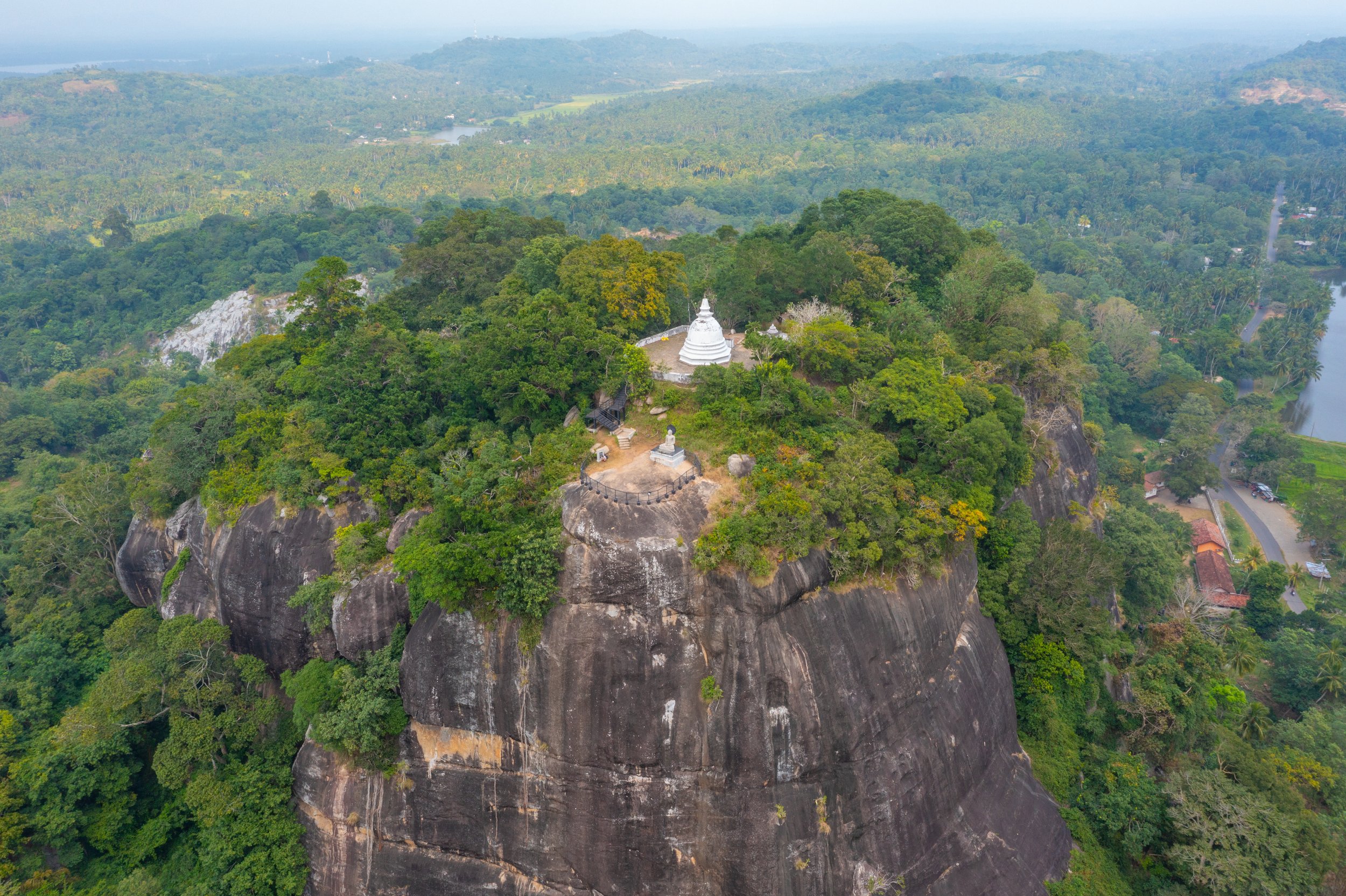Mulkirigala Rock Temple or Raja Maha Viharaya
At a Glance
Here the pilgrim can travel through a network of seven caves along this massive rock protrusion, containing a stupa with the Buddha's relics and a Bodhi tree sprung from the great Bodhi tree first brought to Sri Lanka.
The Story
In Giruwa Pattu of Hambanthota District of Southern Sri Lanka, the Mulkirigala (or Mulgirigala) temple/cave complex can be found along the Beliatta -Weeraketiya main road and turning off at Mulkirigala Junction. The temple is situated 2 km from the Mulkirigala Junction. Mulkirigala rock rises about 676 feet above the surrounding land mass. Here the pilgrim finds seven cave temples situated in five terraced sections. These include the Lower Terrace (Patha Maluwa), the Bodhi Tree Terrace ( Bodhi Maluwa), the Great King's Temple Terrace ( Raja Maha Vihara Maluwa), the Upper Bo Tree Terrace (Uda Bodhi Maluwa) and the Stupa Terrace (Chaitya Maluwa). The pilgrim can move comfortably through well paved granite paths and steps.
The bodhi tree found on the upper terrace is a shoot from one of the 32 saplings of Anuradhapura Jaya Sri Maga Bodhi planted here during the rein of King Devanam Piyatissa. Mulkirigala temple is also considered to be one of the 64 temples constructed by King Kawantissa in the 3rd century, BCE. At that time is was known as 'Muhudu Gira'. The stupa on the highest terrace houses Buddha relics offered by the King Saddhatissa. According to the Mahavamsa, King Mahanaga, King Kawantissa, King Dutugemunu, King Parakramabahu the Great, King Saddhatissa, King Valagamba, King Jetta Tissa I, King Parakramabahu I all engaged in offerings and construction of these temple during their reigns.
The temples we encounter as pilgrims now belong to the Kandyan era. The Buddha images and many cave paintings depict magnificent examples of Kandyan era arts and crafts. Mulkirigala Rock Temple is one of the few 'Raja Maha Vihara' or the 'Temples of the Great Kings' ( of the Kandyan Kingdom) that we can visit from the Kandyan Kingdom. King Keerthi Sri Rajasinghe (1747 AD) sponsored the reconstruction of this temple after it was neglected for centuries since the rein of the Parakramabahu the Great.
The seven cave temples contain sculptures of reclining Buddhas , seated Buddhas and standing Buddhas, as well as paintings of Buddhas, arhats, gods and jataka stories. The main entrance to the temple premises awaits us at the ground level. We pass by a pilgrim's rest area and the Sanghavasa where the monks reside. The path then leads towards the lower terrace and the ticket office. And here we encounter the cave of Lord Chulla Tissa, bearing early Brahmi scripts belonging to the 2nd Century BCE, attesting to the early use of this cave.
Coordinates:
06°07′22.97″N 80°44′10.95″

